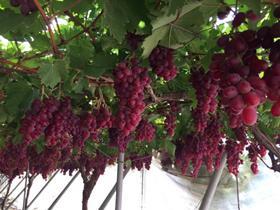
South Africa’s table grape export volumes for the 2017/18 season will be down this year as the effect of the ongoing drought in the country’s western growing regions begins to bite.
With this in mind, table grape industry body SATI has erred on the cautious side in its first estimate of the season.
SATI said the export crop is likely to end up between 58.9m cartons and 63m cartons - marginally above the five-year average (2012/13 – 2016/17 seasons) of about 57.9m cartons.
Last year South Africa packed 67.5m cartons of table grapes for the export market. At this stage, according to SATI, it is possible that the 2017/18 crop could be between 4.5m and 8.5m cartons below last year’s export volume.
“Although the Western Cape, with its three production regions, is affected by the persistent drought, the effect on the estimate at a national level is expected to be less pronounced,' SATI noted.
This is thanks to a combination of factors, including the climatically diverse industry, increased hectares coming into production, a continued shift to higher yielding new generation varieties and the resilience and ability of table grape farmers to adapt to the different growing conditions.
“The season has started quite normally from the earliest region, the Northern Provinces Region,' SATI continued. 'The early regions, which includes the Northern Provinces as well the Orange River Regions, are both unaffected by the drought and estimated to have a slightly bigger harvest than last season. The Orange River region will start about one week later than usual.”
SATI explained that the Olifants River, Berg River and Hex River Regions, which are most affected by the drought and water shortages, are expected to have somewhat lower export volumes, although the crops in the three regions will be in line with the five-year average in each region.
The organisation cautioned that it was still too early to predict what the full effect of the drought would be, and any changes in the present weather conditions would ultimately affect the crop of the two later regions, the Berg River and Hex River Valley. Willem Bestbier, chief executive officer of SATI, said producers would firstly ensure that all programmes and contracted business were satisfied while the continued focus would be on South Africa’s quality offering.



